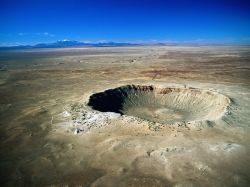Meteor Watch Day
 This one’s for the sky watchers: Meteor Day, June 30th. Why this day? Well, if you happen to be looking up at a clear night sky on June 30th, you might catch some of the Draconid meteor shower coming from the Big Dipper. The good news is that, if you can’t get out of the city for some good meteor watching on this night, you don’t need to be discouraged. There are several meteor showers going on throughout the year. I’ve seen some pretty good meteor showers just through the window of my car while traveling between cities.
This one’s for the sky watchers: Meteor Day, June 30th. Why this day? Well, if you happen to be looking up at a clear night sky on June 30th, you might catch some of the Draconid meteor shower coming from the Big Dipper. The good news is that, if you can’t get out of the city for some good meteor watching on this night, you don’t need to be discouraged. There are several meteor showers going on throughout the year. I’ve seen some pretty good meteor showers just through the window of my car while traveling between cities.
Spaced Out: Meteors
What Are Meteors, Anyway?
And Are They Scary?
 Meteors are small objects that streak across the sky. They are made up of mostly rock and are usually just clumps of dust or chips off celestial objects like asteroids. Most are no bigger than a peanut and burn up in our atmosphere. Some are bigger and the really spectacular meteors can be as big as a basketball. If they are big enough to survive the trip through Earth’s atmosphere and land on the surface, they become known as meteorites. Potential meteors that haven’t fallen into our atmosphere yet are called meteoroids.
Meteors are small objects that streak across the sky. They are made up of mostly rock and are usually just clumps of dust or chips off celestial objects like asteroids. Most are no bigger than a peanut and burn up in our atmosphere. Some are bigger and the really spectacular meteors can be as big as a basketball. If they are big enough to survive the trip through Earth’s atmosphere and land on the surface, they become known as meteorites. Potential meteors that haven’t fallen into our atmosphere yet are called meteoroids.
Usually, meteors aren’t scary at all and just make an interesting show for skywatchers and astronomy enthusiasts. There have been reports of meteorites falling through people’s ceilings, damaging cars or otherwise causing property damage, but this is not very common. Very rarely, a meteor is big enough to cause serious damage or leave a large crater like this one in Arizona and it is believed that a very big meteor caused the extinction of the dinosaurs. For this reason, forward-looking individuals are interested in creating a defense system against large objects that might be on a collision course with Earth.
Ed Lu at Ted Talks
Ed Lu talks about the most important factor in defending Earth against large meteroids that might threaten Earth: early detection. His non-profit B612 Foundation aims to put a large telescope in solar orbit to detect potentially dangerous meteoroids.
Tips for Watching Meteors
- Get out of the city. Light pollution is a big complaint for anyone interested in stargazing and watching meteor showers because it blots out most of what they like to look at. Get as far away from bright city lights as possible for better viewing. Your local astronomy club might know a good spot, so be sure to look them up.
- Pay attention to the weather reports. It’s no fun if you plan a night of meteor watching, only for the sky to be clouded over on the big night. Look for clear skies and also plan on taking jackets in case it gets cool.
- Bring lawn chairs and blankets. This way, you can watch for meteors in relative comfort and not feel like quitting after an hour because you’re sick of standing or laying on cold, hard ground.
- Know which part of the sky the meteor shower is coming from. Meteors can come from any part of the sky but most meteors will be coming from one particular constellation during a meteor shower. It helps to have a star map and a note of which constellation the meteors will be coming from on any particular night.
- Be patient. Sometimes you can look for several minutes and see nothing, and then see three meteors in a row. Even with the best meteor showers, you will rarely see more than one a minute.
When Are Meteor Showers
- Quadrantids: Jan. 3-4. This meteor shower is a short one that only lasts one day. Meteors are sporadic but generally average about 60 meteors an hour. Look near Bootes.
- Lyrids: April 21-22. This shower is known for its bright, long-lasting meteors. Look near Vega.
- Eta Aquarids: April 21-May 12. This is debris from Halley’s Comet with bright yellow tails. Look near the Water Jar.
- Perseids: August 13. It comes from the Comet Swift-Tuttle. Look near the Constellation Perseus.
- Orionids: October 15-29 with a peak between October 20-22. Look near the constellation Orion.
- Leonids: November 13-21 with a peak during November 17-18. Its discovery in 1833 helped advance the study of meteors and the understanding of meteor showers, and caused a panic from superstitious folks who were convinced that the world was coming to an end. Look near the Constellation Leo.
- Geminids: December 13-14. This is the final major meteor shower of the year. Look in the Constellation Gemini region.
Learn More About Meteor Showers
Meteors on eBay
[simple-rss feed=”http://rest.ebay.com/epn/v1/find/item.rss?keyword=%28meteor%2Cmeteor+shower%2Cabout+meteors%29&categoryId1=1&categoryId2=267&sortOrder=BestMatch&programid=1&campaignid=5337337555&toolid=10039&minPrice=20&listingType1=All&lgeo=1&feedType=rss” limit=10]









